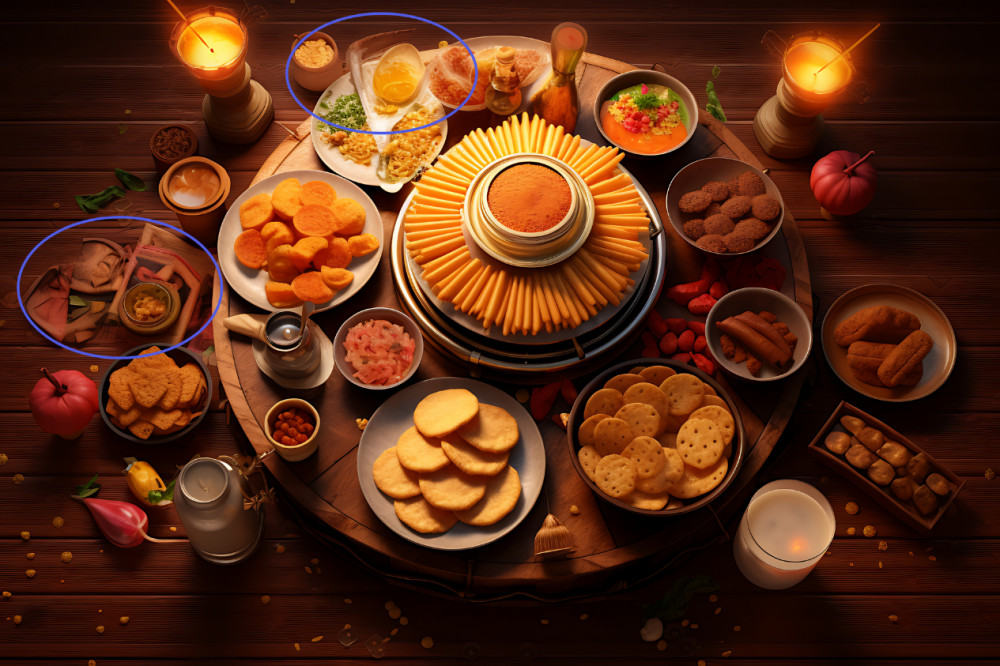
Pizza Through the Ages
Pizza Through the Ages
From Teenage Mutant Ninja Turtles to Joey from Friends, everyone loves pizza. Whether it is a sleepover with friends, a dinner date, a cosy family reunion or a break-up binge eating session by oneself, pizza has become our go-to comfort food.
For a dish that is so popular and loved across the world, a lot of us don’t know how it came into existence. With that in mind, we dig deep into the past of the one dish that has managed to become a de facto symbol of fast food indulgence in the modern world.
When It All Started
Virgil’s Aeneid, an extension of Homer’s Iliad, is allegedly supposed to have a tangential mention of something resembling pizza as we know it. The story shows Aeneas, the protagonist of the story traveling the high seas searching for a new home with his rag tag band after the fall of Troy. The group lands on the shores of modern day Italy, starving. All they had left were some circular, stale loaves of bread. In Virgil’s words, they collected some ‘fruits of the field’ and put them on the thin loaves.
So hungry were they that they ended up eating the loaves as well, leading Ascanius, son of Aeneas, to exclaim, ‘Heus etiam mensas consumimus inquit Iulus’, or ‘We’re even eating our tables!’
Aeneid is dated around 800 BC but the original story is assumed to have taken place around 1250 BC. Keeping in mind that totmatoes had still not reached European shores, imagining these as conventional pizzas is difficult. But the idea of using flattened loaves of bread as platters for vegetables, sauce or meats was incredibly common in olden Europe.
In Naples, Italy, flatbreads were sold by street vendors as an on-the-run sort of a meal that was cheap and filling. The basic toppings were garlic and salt and sometimes animal fat/lard or anchovies. This was the staple for the Lazzaronis, the poorest of the labour class in Naples, who were always on the move looking for work and needed something to eat on the go.
Baked fermented dough with various toppings have been a part of many cultures across the ages. Be it focaccia, manakeesh, flatbreads with dried herbs or naan bread with spices, all these dishes, while similar to today’s pizza, have a lot of local significance in their respective cultures.
Pizza Comes Home to Italy
The story of how pizza established a foothold in Italy has been shrouded in controversy. The folklore begins with King Umberto I coming to visit Naples with his wife, Queen Margherita of Savoy, in the year 1889. Raffaele Esposito created the dish with fresh tomato sauce, basil, and mozzarella cheese to the queen, made in honour of the three colours represented on the Italian flag. Legend has it that she was so impressed by the dish that it came to be known as the Margherita Pizza.
Considering that meat was primarily eaten by the elite classes of Europe back then, it would be safe to presume that pizzas were largely topped with vegetables. There are also contradicting reports out there that indicate that Esposito, in true marketer’s style, concocted the story in an attempt to boost businesses when he fell on hard times. What is commonly acknowledged however, is the fact that he was the one who first made the pizza.
Pizza Takes Over the US
As Italians began to immigrate to the US they brought with them the secrets of making that perfect pizza pie. Having settled in the US, and struggling to make ends meet, many started their own local pizzerias in the US. It was in 1905 that the first pizzeria was started in New York City by Gennaro Lombardi.
The tipping point came around World War II, as the Allied soldiers beat back Mussolini’s forces, they were slowly exposed to the delight that is the pizza. For anyone who has held a slice of pizza in their hand, they know the ease of feeding many that a pizza provides. When these soldiers returned back to the US they brought back their love for eating pizza. These soldiers sought out the little pizzerias that had sprouted around the US in New York City, Chicago, Philadelphia and many other cities.
But each of the US cities gave their own spin to the pizza. In Chicago, it became a deep-dish pie. In comparison, California changed the pizza to something a lot more sophisticated with exciting toppings like chicken, rocket leaves, prosciutto, caramelised onions etc.
With the popularization of the pizza in the US, mass production was not far behind. Soon enough chain restaurants serving exclusively pizza came into being in the form of Dominos, Pizza Hut, Little Caesars, Papa John’s etc.
Pizza Takes Over the World
The popularity of pizza meant that it would definitely be immortalized in pop culture. We began to see regular mentions of this fast food on television shows and movies around the world. From Joey’s obsession with pizza to Jughead’s fascination with the dish to the wildly trending pizza rat on a New York subway, pizzas have been a constant in showbiz and on the internet.
It is because of this constant pop culture fascination with this dish that it had a seamless transition into cuisines around the world. Today, the word pizza has become synonymous with indulgent fast food around the world. And this globalization of the humble pie has allowed an absolutely unheard of metamorphosis of a single recipe.
Local chains today have created their own (some incredible, some Hawaiian) versions of pizzas as well. Toppings today range from jerk chicken, Mediterranean kebabs, chilly chicken, assorted veggies, anchovies (yuck!), cured meats, pineapple (seriously!), French fries, and many more. In fact, India even has its own unique variants of pizzas, like the butter chicken pizza!
In India, Dominos and Pizza Hut came up with desi toppings like tandoori paneer, chicken tikka, keema and loads of local veggies. Once these chains established a foothold and saw brisk business, a lot more chains started opening. With internationalization, more and more individuals developed a more refined palate and started asking for authentic pizzas. Around the early 2000’s is when pizzerias in India saw a shift and along with chain restaurants, people’s preference for boutique pizzerias shot up!
Pizza, as We Know It Today
For the millennials and Gen Z, pizza has become an integral part of life. The mere sight of slice hanging by those fine filaments of mozzarella cheese has become an aphrodisiac for our palate in a way that no dish has managed so far.
If you need numbers, here are some. For a global population of over 7 billion, we see over 5 billion pizzas sold every year. Out of this, at least 3 billion pizzas are sold in the US itself. It has become the go-to snacks for people of all age groups. Be it toddlers or septuagenarians, the word pizza, in most cases, would be met with a salivating grin.
If you need any further proof, back in 2015 a Russian man married pizza! To be honest, that actually does seem like a very safe bet. Nothing is quite as pure as a man’s love for pizza.
For now, let’s just conclude by saying that humanity’s adoration for pizza is here to stay. The pie might go through countless modifications depending on local cultures and tastes, but our love for it will never fade.
Related Blogs

Meal-Prep Magic: Dinners You Can Plan for the Week
68 Views

Flavours of Mizoram: The Harvest Table You Need to Try
104 Views

Fusion Thanksgiving: India-Inspired Global Feast
116 Views

Food Offerings and Festive Plates of Kartik Purnima
228 Views

The Science of Ferment: Easy Homemade Fermented Foods
167 Views